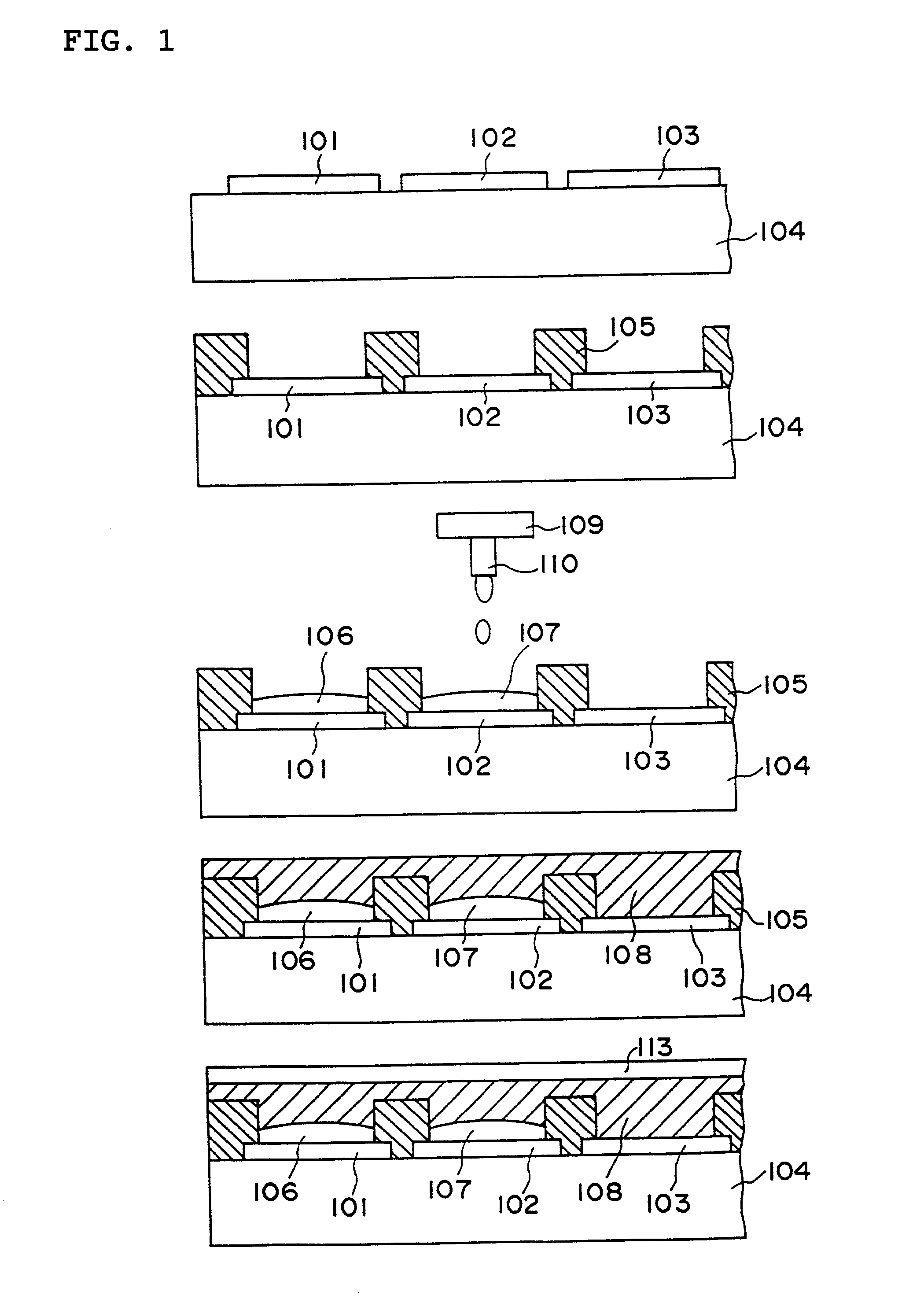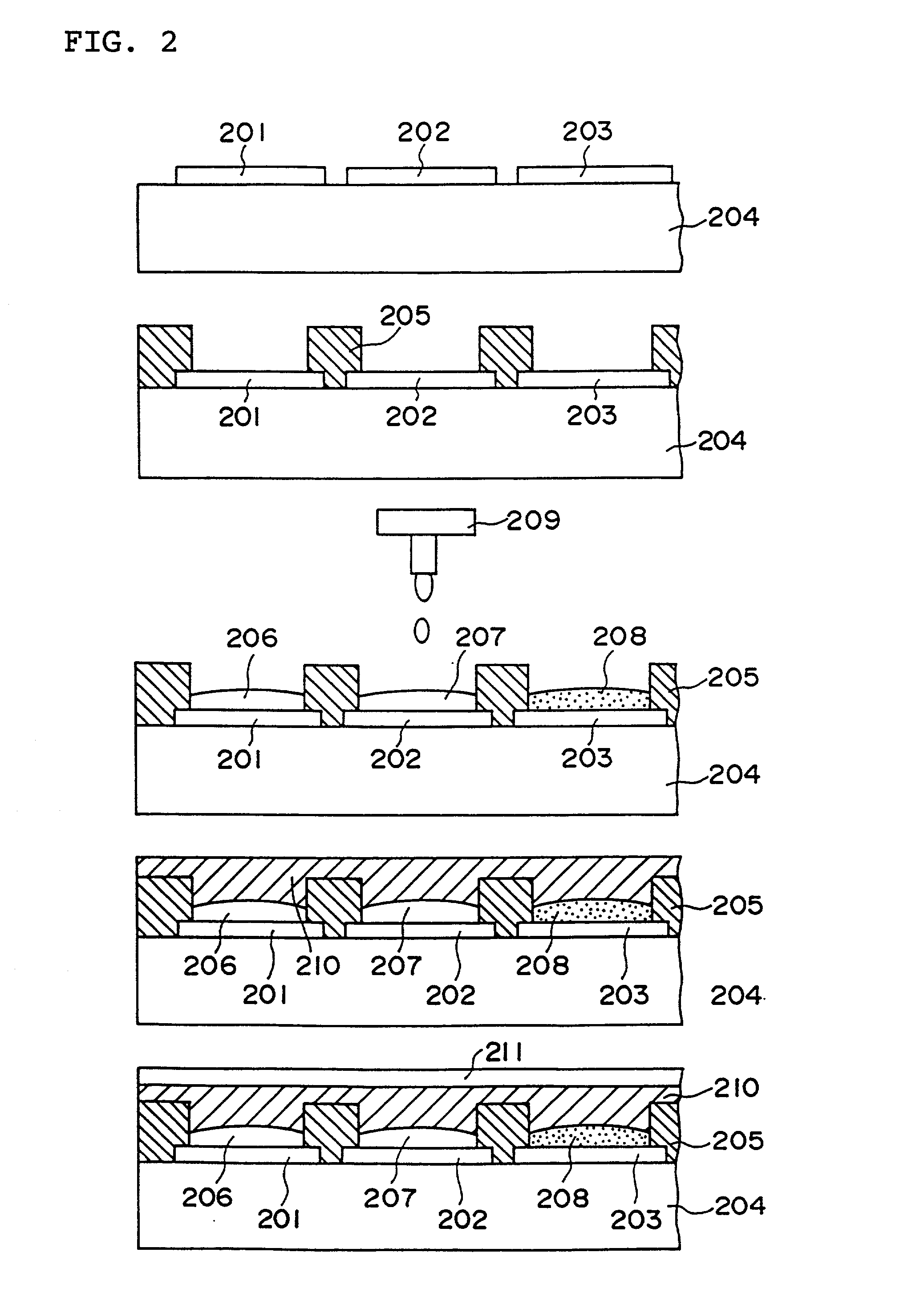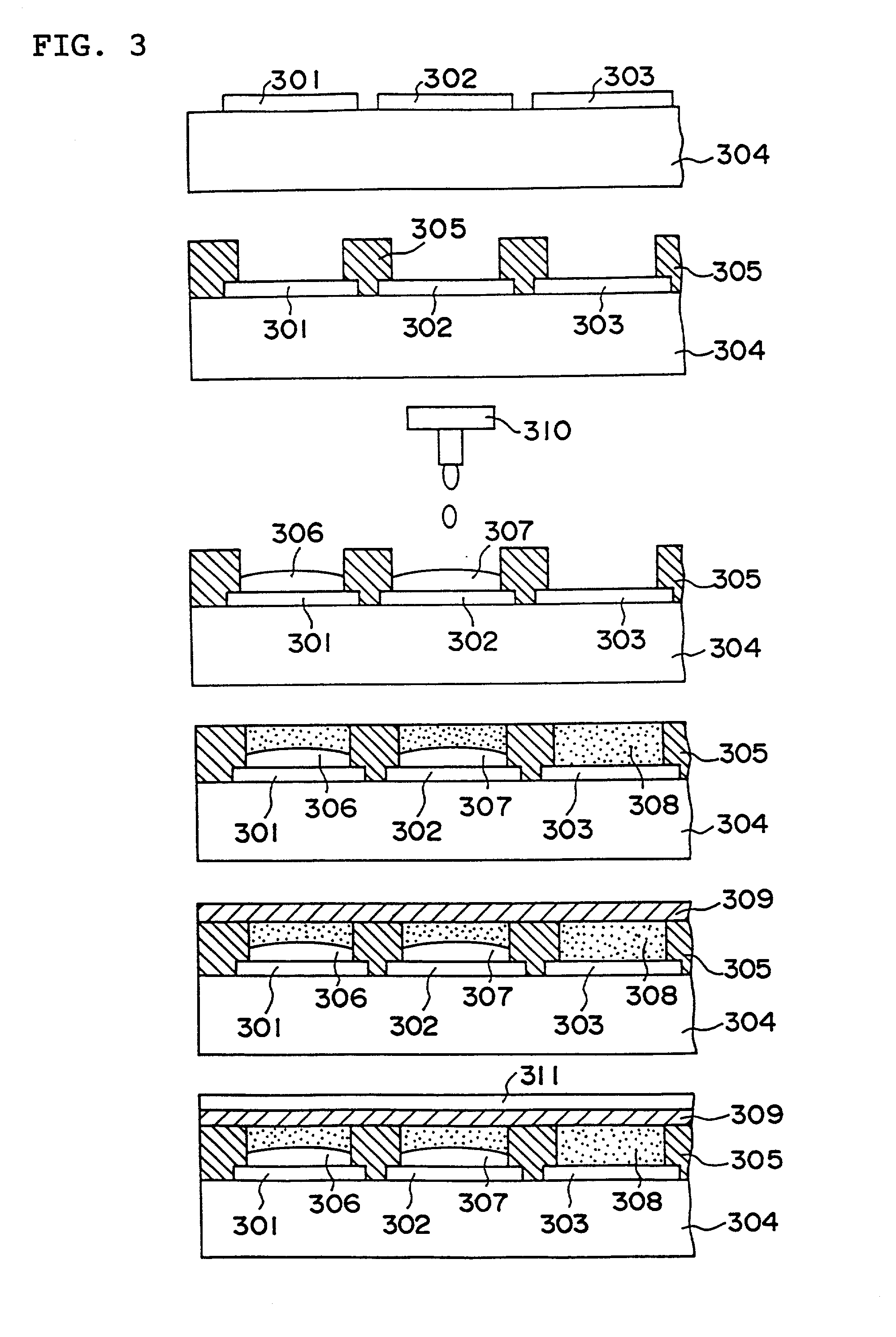Method of manufacturing organic EL element, organic EL element, and organic EL display device
a technology of organic el and display devices, which is applied in the direction of identification means, instruments, other domestic objects, etc., can solve the problems of inability to say that the method is an efficient method of manufacturing elements, difficult to carry out patterning with high precision, and long time, etc., to achieve easy and precise patterning, excellent luminescence characteristics, and simple manner
- Summary
- Abstract
- Description
- Claims
- Application Information
AI Technical Summary
Benefits of technology
Problems solved by technology
Method used
Image
Examples
first embodiment
[0041] FIG. 1 shows the manufacturing method of the organic EL element according to the present invention. This figure shows the manufacturing method of a full color organic EL element with three colors. As shown in the figure, this invention is directed to a method of manufacturing an organic EL element which comprises a step of forming pixel electrodes 101, 102 and 103 on a transparent substrate (transparent support) 104, a step of patterning luminescent layers 106 and 107 which are made of organic compounds on the respective pixel electrodes, and a step of forming a cathode 113, wherein the method is characterized in that the formation of the luminescent layers is carried out by means of an ink-jet method.
[0042] The transparent substrate 104 functions not only as a support but also as a surface through which light is taken out. Accordingly, the material for the transparent substrate 104 is selected by taking the light-permeability, thermal stability and the like into consideratio...
second embodiment
[0100] FIG. 2 shows the manufacturing method of the organic EL element according to the present invention.
[0101] In this second embodiment, after formation of pixel electrodes 201, 202 and 203 and banks 205 on a transparent substrate 204, a red luminescent layer 206 and a green luminescent layer 207 are formed by using an ink-jet method in the same manner as the first embodiment.
[0102] This second embodiment is different from the first embodiment in the point that a hole injection and transfer layer 208 is formed on the pixel electrode 203 and then a blue luminescent layer 210 is laminated on the layer 208. By the lamination of the hole injection and transfer layer 208 with the blue luminescent layer, it becomes possible to promote the injection and transfer of the holes from the electrode to improve the luminous efficiency as mentioned above.
[0103] Thus, in the manufacturing method for the organic EL element according to the present invention, it is preferable to laminate a hole in...
third embodiment
[0109] FIG. 3 shows the manufacturing method for the organic EL element according to the present invention.
[0110] In this third embodiment, after the formation of pixel electrodes 301, 302 and 303 and banks 305 on a transparent substrate 304, a red luminescent layer 306 and a green luminescent layer 307 are formed in the same manner as the first embodiment.
[0111] Next, a hole injection and transfer layer 308 is formed on the entire surface of the red luminescent layer 306, the green luminescent layer 307 and the pixel electrode 303. By laminating the hole injection and transfer layer 308 with the luminescent layers 306 and 307 in this way, it is possible to promote the injection and the transfer of the holes from the electrodes to improve the luminescence efficiency, as described in the above.
[0112] Further, by the same reason as in the above, it is preferable that the hole injection and transfer layer 308 is formed into a non-luminescent layer.
[0113] No particular limitation is imp...
PUM
| Property | Measurement | Unit |
|---|---|---|
| contact angle | aaaaa | aaaaa |
| contact angle | aaaaa | aaaaa |
| contact angle | aaaaa | aaaaa |
Abstract
Description
Claims
Application Information
 Login to View More
Login to View More - R&D
- Intellectual Property
- Life Sciences
- Materials
- Tech Scout
- Unparalleled Data Quality
- Higher Quality Content
- 60% Fewer Hallucinations
Browse by: Latest US Patents, China's latest patents, Technical Efficacy Thesaurus, Application Domain, Technology Topic, Popular Technical Reports.
© 2025 PatSnap. All rights reserved.Legal|Privacy policy|Modern Slavery Act Transparency Statement|Sitemap|About US| Contact US: help@patsnap.com



